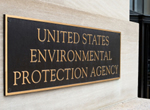Category: EHS Management
Guide to EHS Metrics
Measuring EHS Performance
Why It’s Important to Recycle Electronics
Top 10: Environmental Daily Advisor Year in Review
Happy Holidays from the Environmental Daily Advisor staff–Kelly, Rafael, Denise, Allison, and Amanda. 10 Steps to Get Rolling on a Recycling Program for Universal Waste Lamps “If your facility resolves to be more green this New Year, a good place to start is a recycling program for your mercury-containing light bulbs. Here are 10 essential […]
Is Pipeline Gas Waste or Nonwaste?
Top 7 Environmental Daily Advisor Articles: SPCC Edition
After a Spill: SPCC Notice and Amendment Requirements Under SPCC regulations, if your facility has discharged more than 1,000 U.S. gal of oil in a single discharge, or 42 U.S. gal of oil in two separate discharges occurring within any 12-month period, you are required to submit a notice regarding that spill to your applicable […]








